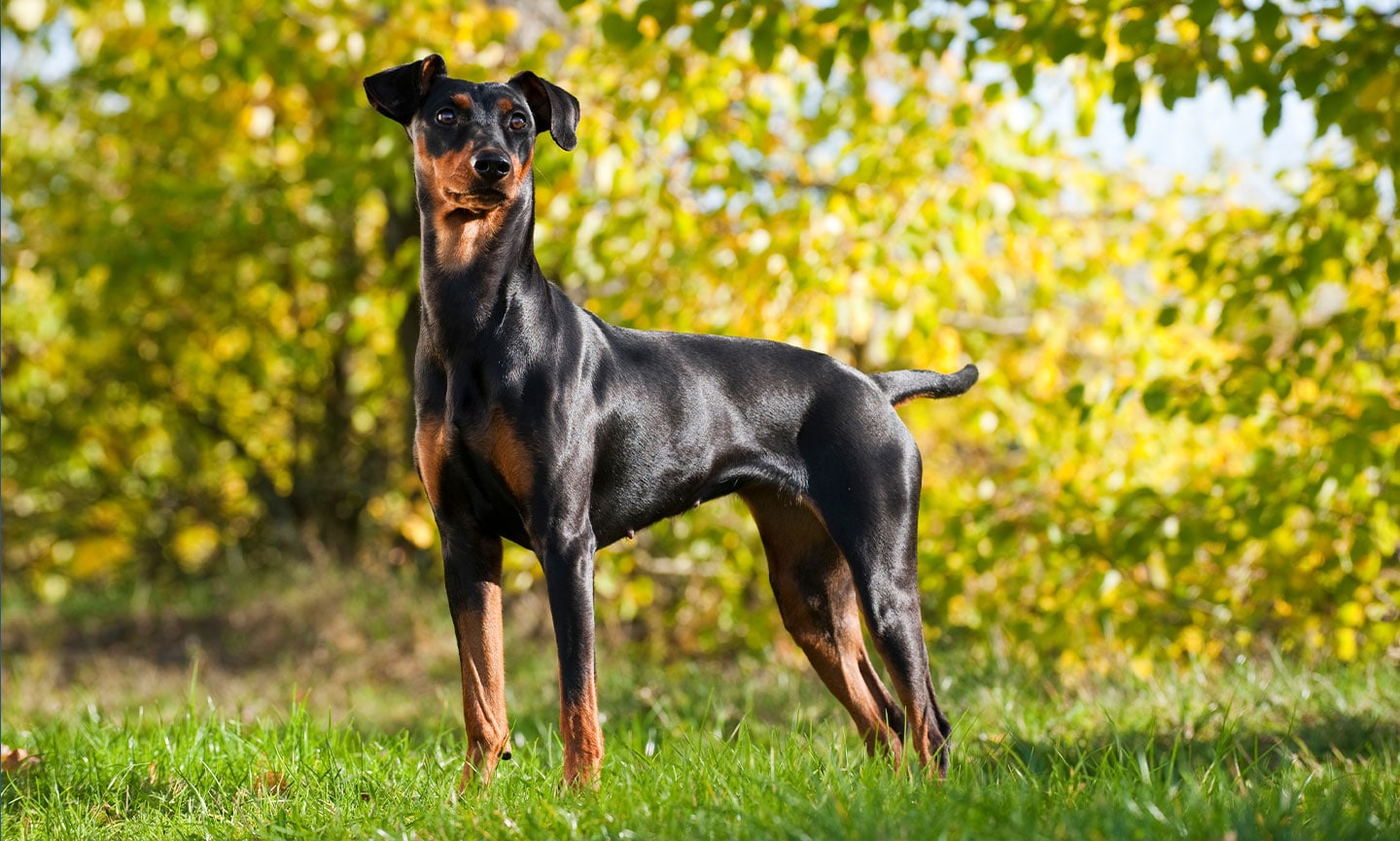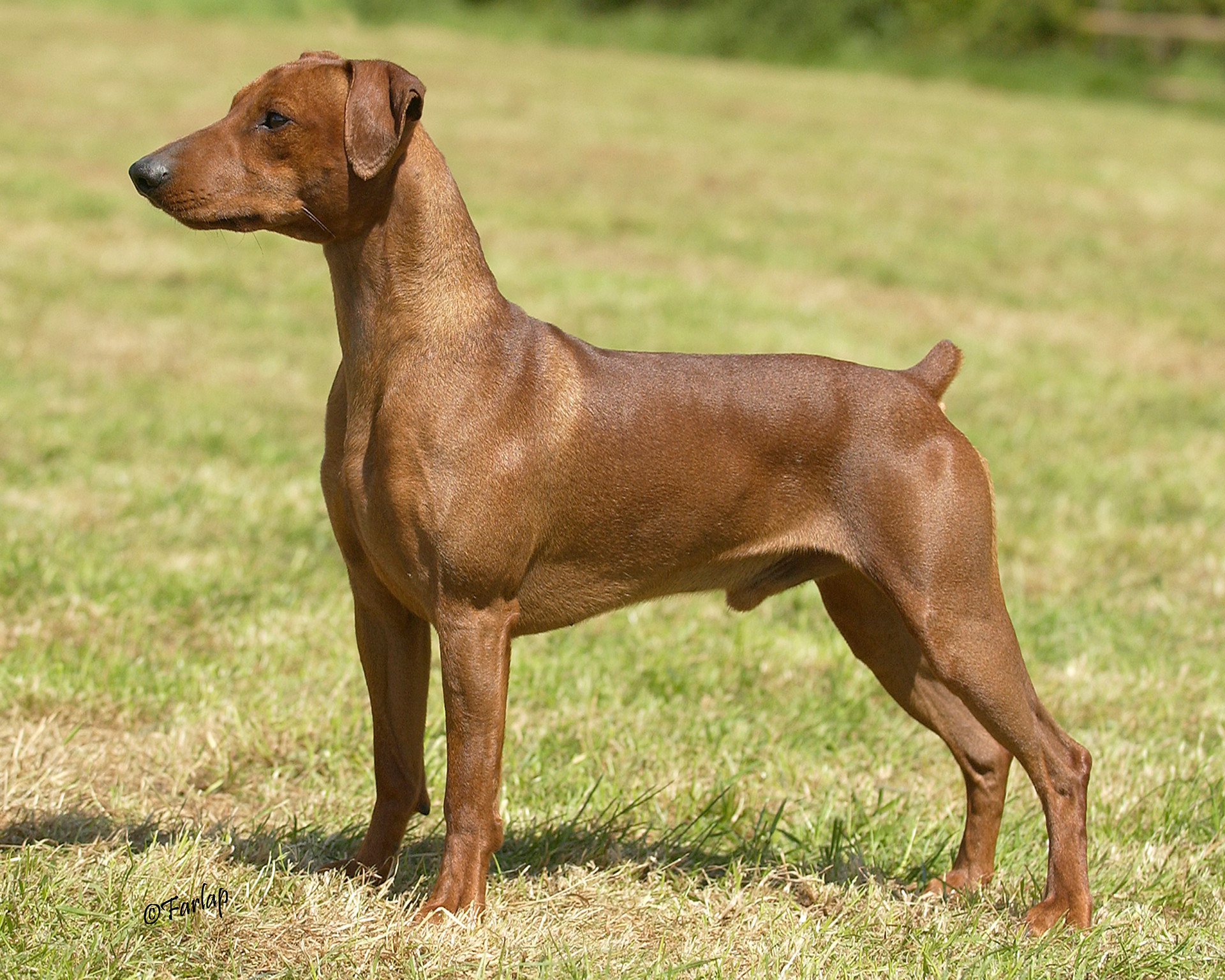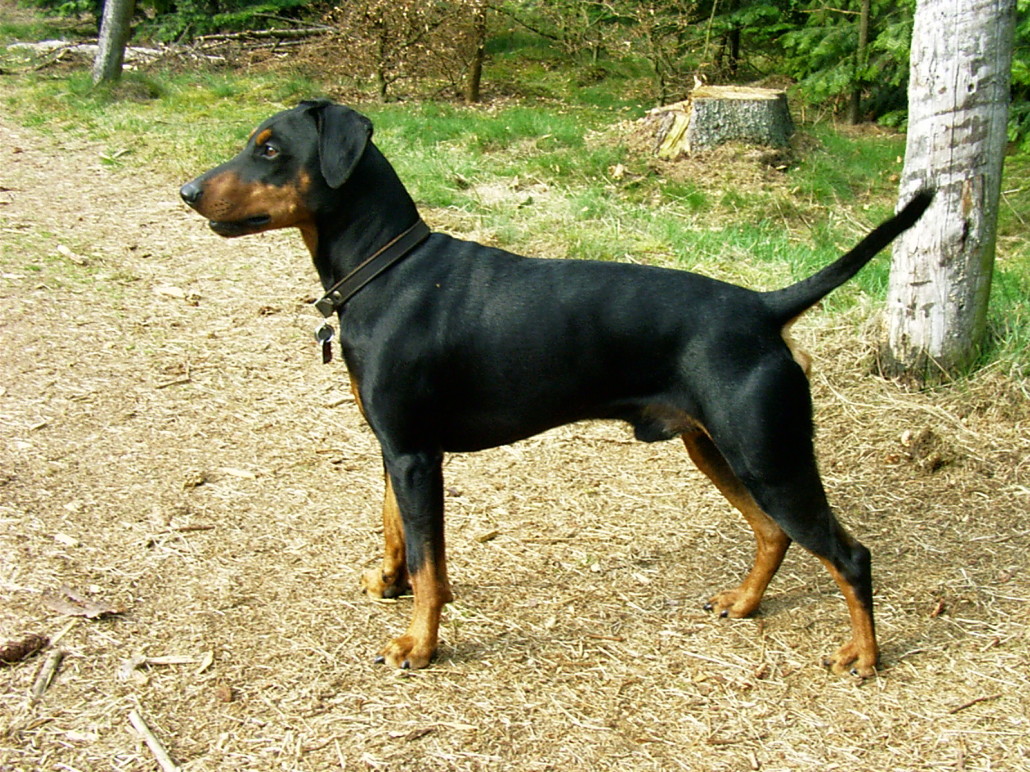
The German Pinscher is a medium-sized, sleek, and intelligent working dog that originated in Germany during the 18th century. As one of the foundational breeds for both the Doberman Pinscher and Miniature Pinscher, the German Pinscher holds a significant place in dog breeding history.
Originally developed to work as a ratter and watchdog on farms and in stables, it was bred to be quick, agile, and fearless. Despite nearly becoming extinct after World War II, the breed was saved in the 1950s thanks to the dedication of Werner Jung, who used only a few remaining dogs to revive the line. Today, while still relatively rare, the German Pinscher is prized for its vigilance, intelligence, and dynamic personality.
The American Kennel Club (AKC) officially recognized the breed in 2003, placing it in the Working Group.
Though not as widely known as the Doberman, the German Pinscher is admired by those who appreciate a compact but powerful watchdog and companion. Its athleticism, loyalty, and elegance make it a favorite among experienced dog owners who want a dog that combines beauty with brains.
The German Pinscher is a medium-sized, muscular, and elegant dog with a striking, streamlined appearance.
• Coat: Short, dense, and smooth—lies flat against the body and requires minimal grooming.
• Color:
o Black and tan, red (fawn to rust), or blue and tan, with clear, defined markings.
• Size:
o Height: 17–20 inches (43–51 cm)
o Weight: 25–45 lbs (11–20 kg)
• Head & Expression: Elongated, clean head with a moderate stop and alert, intelligent eyes.
• Ears: Set high—may be natural (V-shaped and dropped) or cropped depending on region.
• Tail: Typically docked in some countries; when natural, it's medium-length and carried high.
• Body: Compact, muscular, and balanced—built for speed, agility, and strength.
German Pinschers are known for being alert, fearless, and intensely loyal.
• Vigilant Watchdog: Natural guardian instincts make it an excellent alert dog—always on duty.
• Energetic and Agile: Loves to move and play—needs physical and mental outlets.
• Bold and Confident: Assertive without being aggressive—not for passive owners.
• Loyal and Devoted: Forms strong attachments to its family—protective and affectionate.
• Highly Intelligent: Quick learners but can be stubborn and headstrong.

This breed is perfect for active individuals or families who want a loyal, confident, and athletic dog with strong protective instincts.
• Compact but Powerful: Fits easily in homes or apartments but has all the attitude of a big dog.
• Excellent Watchdog: Naturally alert without excessive barking.
• Trainable and Intelligent: Learns quickly and enjoys structured activities.
• Minimal Grooming: Sleek coat requires little maintenance.
• Elegant Appearance: Graceful yet sturdy—a beautiful, eye-catching companion.
This breed thrives in engaged homes that can provide structure, exercise, and leadership.
• Training:
o Start early—needs consistent, positive training and firm leadership.
o Mental stimulation is essential—consider agility, obedience, or scent work.
• Exercise:
o Needs at least 60 minutes of active play and walking daily.
o Enjoys running, hiking, playing fetch, and puzzle games.
• Grooming:
o Weekly brushing and occasional baths are sufficient.
o Keep nails trimmed and ears clean.
• Nutrition:
o Feed a balanced, high-protein diet appropriate for active medium-sized dogs.
• Companionship:
o Best in homes where it can interact closely with its humans—doesn’t do well when isolated.

The German Pinscher is a healthy, robust breed, with a lifespan of 12–14 years. Potential health concerns include:
• Hip Dysplasia
• Von Willebrand’s Disease (a bleeding disorder)
• Cataracts and Eye Issues
• Heart Conditions (e.g., cardiomyopathy)
Choose breeders who perform health screenings and prioritize structural soundness and temperament.
Compared to the Doberman, the German Pinscher is smaller and more agile, with a more manageable energy level for the average home. It’s larger and more intense than the Miniature Pinscher, and more focused and obedient than the Manchester Terrier, though all share similar looks.
If you’re an experienced dog owner who wants a smart, bold, and devoted companion, the German Pinscher offers big personality in a medium-sized frame. It thrives in homes where it can be mentally challenged, physically active, and closely bonded to its family.
However, this breed is not ideal for first-time dog owners, or those who want a laid-back, low-energy pet.
United Pet Club can help you find trusted breeders, training guidance, and care resources to ensure a successful journey with this dynamic German watchdog. If you’re ready for a companion who’s as bold as they are beautiful, the German Pinscher may be the perfect match.